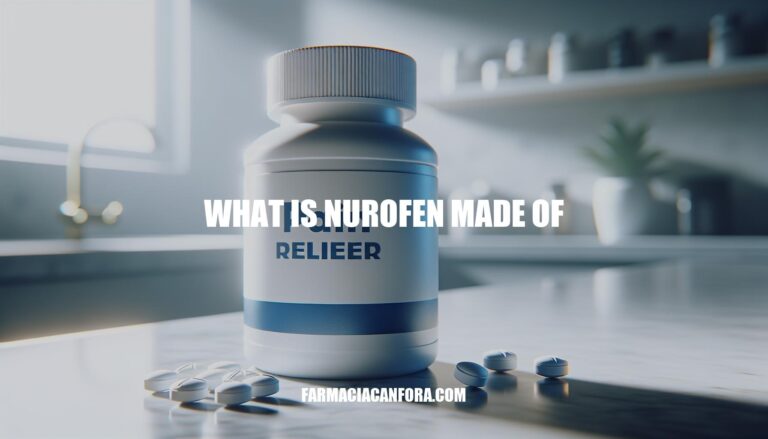


Nurofen is a widely used pain relief medication primarily composed of ibuprofen, a non-steroidal anti-inflammatory drug (NSAID). Some variants also include additional ingredients like codeine or pseudoephedrine for specific types of pain relief. Understanding its composition is crucial for safe and effective use, as it helps in managing pain while being aware of potential side effects and interactions with other medications.
ibuprofen“>Nurofen contains ibuprofen, which is a non-steroidal anti-inflammatory drug (NSAID). Ibuprofen works by blocking the production of prostaglandins, chemicals in the body that cause inflammation and pain. By inhibiting these chemicals, ibuprofen helps reduce inflammation, alleviate pain, and lower fever. This makes Nurofen effective for treating various conditions like headaches, muscle pain, and arthritis.
Here are the different formulations of Nurofen and their specific uses:
Ibuprofen Lysine Salt:
Both formulations are effective for reducing inflammation and pain, but the lysine salt version is preferred when faster relief is needed.
Sure, here are the other ingredients in Nurofen, along with their purposes:
These ingredients help in the formulation, stability, and effectiveness of the medication.
Here are some of the key Nurofen products and their specific ingredients:
Nurofen 200mg Tablets: Contains 200mg of ibuprofen. It’s commonly used for general pain relief, including headaches, dental pain, and muscular pain.
Nurofen 400mg Tablets: Contains 400mg of ibuprofen. This higher dose is effective for more intense pain such as migraines, period pain, and rheumatic pain.
Nurofen Cold & Flu: Combines 200mg of ibuprofen with 30mg of pseudoephedrine hydrochloride. This formulation targets symptoms of cold and flu, providing both pain relief and decongestion.
Nurofen Plus: Contains 200mg of ibuprofen and 12.8mg of codeine phosphate. This variant is designed for more severe pain, combining the anti-inflammatory effects of ibuprofen with the opioid pain relief of codeine.
Nurofen Tension Headache: Uses ibuprofen lysine, which is absorbed faster than regular ibuprofen, making it effective for quick relief from tension headaches.
Each product is tailored to address specific types of pain, ensuring targeted and effective relief.
Nurofen is a widely used pain relief medication primarily composed of ibuprofen, an NSAID that works by blocking prostaglandins to reduce inflammation and alleviate pain.
Its formulation includes additional ingredients like codeine or pseudoephedrine for specific types of pain relief. The composition of Nurofen is crucial for safe and effective use, as it helps manage pain while being aware of potential side effects and interactions with other medications.